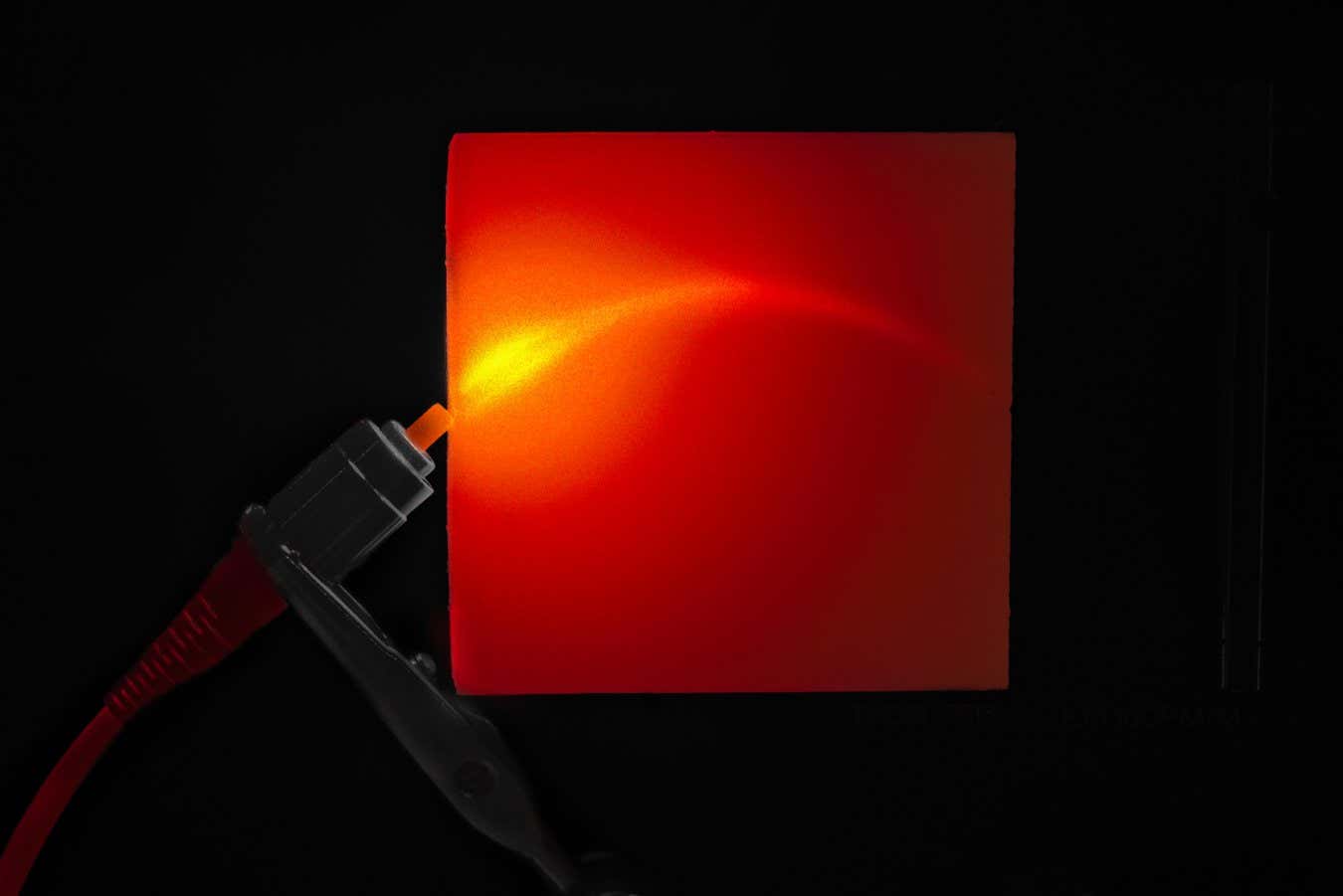Light can be directed and steered around bends using a method similar to the way clouds scatter photons, which could lead to advances in medical imaging, cooling systems and even nuclear reactors
By Matthew Sparkes
1 November 2024
A new material can bend light
University of Glasgow
Scientists have discovered a technique whereby light can be bent around corners, inspired by the way clouds scatter sunlight. This type of light-bending could lead to advances in medical imaging, electronics cooling and even nuclear reactor design.
Daniele Faccio at the University of Glasgow, UK, and his colleagues say they are shocked this type of light scattering wasn’t noticed before. It works on the same basis as clouds, snow and other white materials that absorb light: once photons hit the surface of such a material, they are scattered in all directions, barely penetrating at all and getting reflected out the way they came. For instance, when sunlight hits a tall cumulonimbus cloud, it bounces off the top, making this part of the cloud appear bright white. But so little light reaches the bottom of the cloud that this part appears grey – despite being made up of the same water droplets.
“The light bounces around and sort of tries to get in, and it’s bouncing off all the molecules and the defects,” says Faccio. “And eventually what happens is it just gets reflected back because it can’t get in. This is this scattering.”
Advertisement
Read more
Light-based computer could outpace traditional electrical chip designs
To replicate this process, the team 3D printed objects from opaque white material while leaving thin tunnels of clear resin within. When light is shone at the material, it travels into these tunnels and is scattered – just as light is on snow or clouds. However, instead of scattering randomly in every direction until they are evenly dispersed, the photons are directed to return to the resin tunnel by the opaque material. The team put this to use, creating a range of objects that steer light in an organised way.
3D-printed white blocks with curved channels guide scattering light University of Glasgow
